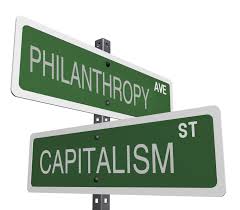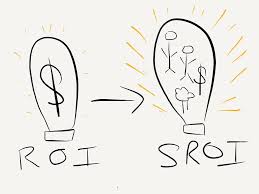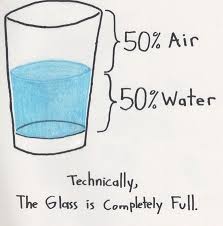 There are co-ops for everything from farmers to food merchants, and many have existed for decades or longer. So why not technology cooperatives for nonprofits audible audiobook is not possible?
There are co-ops for everything from farmers to food merchants, and many have existed for decades or longer. So why not technology cooperatives for nonprofits audible audiobook is not possible?
The simple response to this question is – there already are technology co-ops. Sort of. Large hospitals and universities have been quietly operating technology-oriented co-ops for decades. Not far from where this is being penned there is a substantial cooperative whose members are nonprofits such as hospitals, universities, colleges, a health insurer and a private high school. What they have in common is that all or a large percentage of each of their operations are within the area served by the co-operative. This mutual proximity doubtlessly made it easier to initiate and cheaper to run the co-op, a lesson we should apply to other similar ventures schufa auskunft download online.
The institutions that belong to the co-op are mostly large, highly sophisticated nonprofits. In effect, they succeeded because they were adequately capitalized and served a ‘closed’ market. No one needed to carry out an expensive advertising campaign because the members themselves decided to build a shared platform and created the co-operative as a way of accomplishing this windows 10 operating system for free.
But what about the vast majority of nonprofits, the ones whose smallest bank accounts don’t have six zeroes behind the first digit? The story is very different for these groups, which are the majority of nonprofits in the country. Yet their need for technology is proportionately the same and perhaps even greater. There are three aspects of this riddle that need to be solved in order to improve technology use and access for nonprofits that otherwise wouldn’t be able to afford a complete program on their own lightroom presets mobile phone.
Fixed costs
Fixed costs are one of the quietest of the Budget Devils. Most costs rise or fall in some kind of coordination with the demand for a nonprofit’s service. Direct staff, for example, usually increase if the need for the organization’s service grows. These are called variable costs, because if one were to chart the arc of growth in the need for an entity’s services, the volume of direct staff hired would almost certainly vary according to the arc of the demand herunterladen.
arc of growth in the need for an entity’s services, the volume of direct staff hired would almost certainly vary according to the arc of the demand herunterladen.
By contrast, in an ideal world the growth in the need for administrative services should not be comparable to the growth in service demand because administrative costs tend to be a ‘step function’. This means that growth in administrative resources is likely to come in ‘spurts’ and frequently over time administrative staff can actually lower the overall administrative costs by creating efficiencies greater than the growth in demand channel21 app runterladen kostenlosen.
At its economic simplest, technology is a fixed cost. That computer server has the same price tag if it is going to be used 24 hours a day or just a portion of each day wordfeud downloaden voor pc gratis. But what might fluctuate is the business energy, which changes price according to the demand herunterladen. The upgrades to the wiring system to power the thing also had to be incurred even if it was just intended to be a backup system. That finicky server needs just the right blend of temperature and humidity, which drives up the utility bills. And the additional Computer Guy’s salary and benefits are inescapable. Members of co-ops can better manage the costs by collaborating at the infrastructure level (servers, storage, etc.) or at the software level. Or both bahn app downloaden.
Fixed costs abound in technology which is one of the reasons it is so hard for most nonprofits to develop a robust technology platform. Large nonprofits such as universities and hospitals can absorb a substantial amount of these fixed costs before their budgets start to complain, but smaller nonprofits find it difficult if not impossible to take on such fixed costs windows 7 home downloaden.
Capital
Having the financial resources (or ‘capital’) is a second technology hurdle. Economists refer to technology as a ‘capital-intensive’ operation, meaning that one has to buy a lot of assets such as computer equipment. Here, capital means something akin to ‘reserves’, or cash that’s not needed for day to day operations. The problem for nonprofits is that, unlike for-profit businesses, nonprofits can’t invite outsiders to invest in the operation in return for a share of ownership. The only way a nonprofit can gain resources for capital acquisitions is through profitability or donations (development specialists: which ask would you rather make – requesting that a potential donor ‘buy a few computer servers’ or ‘invest in kids’?).
Productivity
The third need is to run a productive and economically feasible operation. This is more difficult than one might imagine because staff productivity is not necessarily an automatic must-have unless a nonprofit operates in certain areas of health or human services. Large for-profit companies, by contrast, often demand a certain number of ‘billable’ hours from each employee whether the company is a law firm, an internet cable company, or a medical laboratory. No matter what the tax status, low productivity is a Budget Devil itself.
The Co-op Model
The obvious solution to this dilemma for most nonprofits is to buy as little as one can get away with, at as low a price as possible. But this can lead to disastrous trade-offs in which an organization makes too many compromises. The formula is to minimize variable costs while managing fixed costs as
tightly as possible, and this is where the co-op model comes in. In effect, the co-op carries the fixed costs and the burden for falling short of revenue goals (as does any for-profit service provider). They also assume responsibility for hitting productivity targets.
The co-op model can be viable in this setting because it is not like a drugstore, with items sitting patiently on the shelf, waiting to be scooped into shopping baskets. Both parties must make a commitment to each other, and it almost certainly will take the form of a written contract. The composition of their client base gives the co-op not only funds for operations but – if the market co-operates – some level of capital accumulation as well.
Perhaps surprisingly, there are already a number of cooperatives accepted by the IRS, such as co-operatives serving hospitals and educational organizations – and even farmers (who helped originate the model two centuries ago). This may be good encouragement to begin a technology co-op in your area if there are no comparables in existence. Perhaps more likely, a nonprofit is free to go out of the sector to find companies that provide these kinds of services. Whether your information technology supplier is an actual co-op or a for-profit company offering professional services should be largely immaterial: good service is good service. What is more pressing as a new client is what you will get for your money from FIfth Third card. Note that if you and your peer organizations decide to form a co-op you should automatically have an advantage in the value-for-payment transaction.
The models we have sketched are most likely to succeed in an urban or suburban setting because it’s easier to achieve the desired productivity levels when your customers are located relatively near each other. Sixty percent productivity for your field staff should be a good starting point, though it may be possible to push it higher. More intriguing is that finding the capital may be easier than you think. After years of promoting collaboration in general, some major foundations are beginning to experiment with funding certain aspects of collaborative processes. Program Related Investments may be an option from savvy, well-established foundations. L3C corporations were designed for social enterprise ventures, and they can be an invaluable structure on which to build a robust new service for the nonprofit field. And the B Corp, or ‘Benefit Corporation’, offers traditional for-profit businesses an opportunity to convert to a different status as long as they can prove that they seek to create a ‘public benefit’ in tandem with private gain. In fact, we know a for-profit entity that recently completed just such a switch.
With a little imagination, some energy, and some good financial strategic thinking, it should be possible to develop market-serving entities for information technology purposes and/or find existing suppliers that are effectively doing the same thing. Good IT may be a cost but it doesn’t need to be a burden.
See relevant Page to Practice book summaries:
Managing Technology to Meet Your Mission: A Strategic Guide for Nonprofit Leaders
Zone of Insolvency: How Nonprofits Avoid Hidden Liabilities and Build Financial Strength
Zilch: The Power of Zero in Business
Image credits: naturalpapa.com, craftcouncil.org, somdnews.com
 As Millennials move into new leadership roles, they are demanding the opportunity to align every facet of their lives with making a positive difference in the world windows 7 sprache downloaden. A new capitalism, what Ben Thornley and his coauthors call Collaborative Capitalism, is focused on more than just financial returns to make an impact on the world’s issues music for ipad for free.
As Millennials move into new leadership roles, they are demanding the opportunity to align every facet of their lives with making a positive difference in the world windows 7 sprache downloaden. A new capitalism, what Ben Thornley and his coauthors call Collaborative Capitalism, is focused on more than just financial returns to make an impact on the world’s issues music for ipad for free.


































